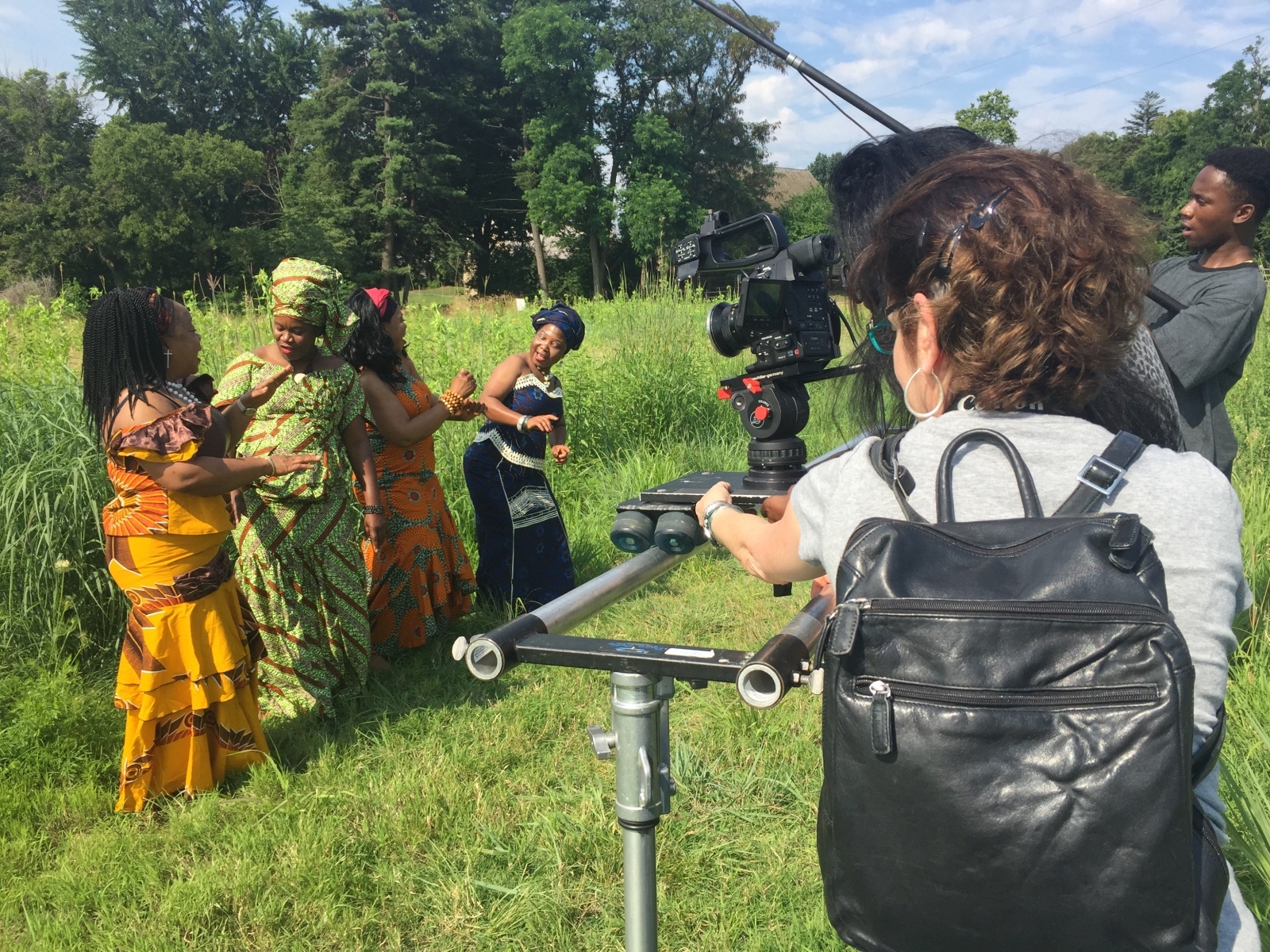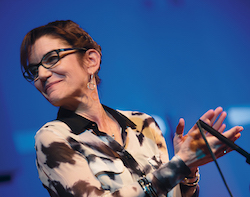The power of the arts to address conflict
 Photo/Kathleen Norton
Photo/Kathleen NortonFrom the making of "Because of the War," directed by Toni Shapiro-Phim
This article originally appeared the fall 2019 edition of State of the Arts magazine.
Dancer, anthropologist and human rights practitioner Toni Shapiro-Phim has joined the faculty of the Creativity, Arts and Social Transformation (CAST) minor, initiated and administered by the International Center for Ethics, Justice and Public Life. She recently sat down with her colleague and fellow anthropologist Leigh Swigart to describe her longtime engagement in the field of human rights and the arts.
Leigh Swigart: How has dance shaped your life both personally and professionally?
Toni Shapiro-Phim: I started dance lessons when I was 4 years old with a woman who had been with the Martha Graham Dance Company. I loved it, and I loved her. I admired so much about that teacher – how she lived her life as well as how she moved physically and otherwise through space. I continued studying dance for years, but not with the idea that I wanted to be a professional dancer.
Fast-forward many years, to when I worked in a refugee camp right after graduating from Oberlin College. This camp, on an island in Indonesia, had 10,000 people who had escaped from Vietnam, taking harrowing journeys by boat. I worked in an education program for adults who had already been selected for resettlement in the United States. There was another section of the island that I would visit sometimes where there were 300 Cambodians. The Vietnamese re-created aspects of home that mattered to them – poetry writing and wood carving, and they built little coffeehouses, whose style I later recognized when I visited Hanoi. But among the Cambodians, just those 300 who were survivors of the Khmer Rouge genocide, they were dancing and playing music; they either made instruments or they asked for instruments, which were flown in from a Cambodian refugee camp in Thailand, so they could teach their kids to dance and play music. And these were not professional artists or graduates of the School of Arts or anything.

Toni Shapiro-Phim
I was completely blown away by this, because they chose to re-create traditional dance and music as a way to be alive as a Cambodian person in this inhumane and vulnerable situation. Later, when I worked in a Cambodian refugee camp in Thailand, I saw thousands of people gathering to watch their fellow refugees dance and perform music on these makeshift stages. And when artillery shells would fall, they’d stop the show, look for their kids, jump in trenches; and when the shelling stopped, they’d come back and finish the performance.
I felt that this was something to explore – the phenomenon of prioritizing performance in inhumane, violent and dangerous circumstances, when you don’t even know what your future is. So, I enrolled in a PhD program in anthropology at Cornell to study the practice of traditional Cambodian dance in the post-genocide era. The discipline of anthropology encourages deep listening, deep looking, feeling one’s surroundings and investing in relationships. Considering multiple aspects of movement practice – the “who, why, what, where, when” of anthropology – has made my study of dance richer.
LS: You have undertaken a variety of successful projects since then, many connected to folklore and performance. This includes your beautiful film “Because of the War,” which features the Liberian Women’s Chorus of Philadelphia. What do you think the arts can do for people who find themselves in situations of conflict and extreme precarity?
TSP: The arts embrace the profound uncertainties entangled with the never-ending search for responses to cruelty, violence and suffering. Though strategies for addressing situations of persistent dehumanization may be fragile and multilayered, people the world over—on their own or collectively—have, through creative cultural expression, countered imposed narratives that strip away their very humanity, thereby reclaiming and validating their own and others’ dignity. When an art form or aesthetic engagement resonates deeply with people—individuals or groups who may harbor visible and invisible scars, feel isolated or broken, or who are filled with hatred, grief, fear or despair—there is a great potential to, among other things, acknowledge loss and sorrow, animate meaningful dialogue, shift perspectives, build community, engage conflict constructively—and spark the imagining of new possibilities.
For communities that might not share an art form, it is somewhat different. Starting to recognize someone else’s love of, or resonance with, some other kind of expressive mode, something unfamiliar to you – why they’re doing it and what meaning it gives – may lead to the realization that “Ah, that relates to something we do over here.” And that’s a first step to recognizing people as fellow humans, as opposed to enemies, foreigners, “others.”
LS: What do you look forward to as you take on your role with CAST and the Ethics Center?
TSP: I’m really looking forward to getting to know the students engaged in the CAST minor. I’m so impressed that this minor exists at all. I want to learn what has been most fruitful for students thus far, what obstacles, if any, that they have come up against, and what they think might help nurture the program forward in constructive ways.
I am also excited about continuing my work with the IMPACT program, initiated by Cindy Cohen, director of the Ethics Center’s Program in Peacebuilding and the Arts. We are just finishing up an 18-month planning project supported by the Andrew W. Mellon Foundation that looked at ways of supporting and advancing the people, institutions and networks that are engaged at the nexus of the arts, culture and conflict transformation.





